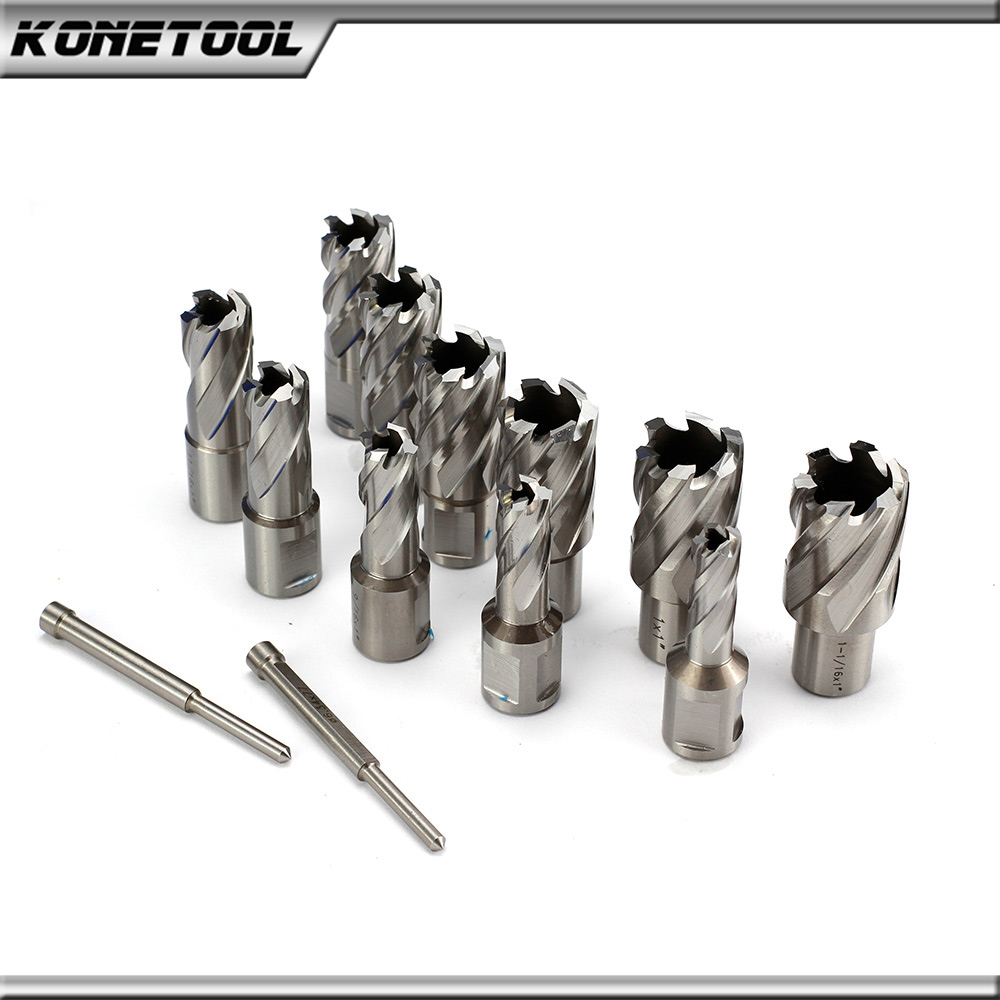
Annular cutters are powerful cutting tools that can be used to create precise and accurate holes in a wide range of metal materials. However, like any power tool, it is essential to use annular cutters safely and correctly to achieve the best results and avoid damage to the tool or injury to the user.
In this article, we will discuss how to use annular cutters safely and effectively, including selecting the right cutter for the job, preparing the workpiece, setting up the tool, and making the cut.
Selecting the Right Annular Cutter
Before beginning any drilling operation, it is essential to select the right annular cutter for the job. The correct cutter will depend on the material being drilled, the size of the hole, and the desired finish.
KoneTool Annular cutters sets are available in a variety of sizes and materials, including high-speed steel (HSS), cobalt, carbide-tipped, and diamond-coated. HSS cutters are ideal for drilling through soft to medium-hard materials, while cobalt cutters are designed for harder materials like stainless steel. Carbide-tipped cutters are ideal for drilling through hard materials like cast iron and stainless steel, while diamond-coated cutters are best suited for extremely hard materials like ceramics, glass, and stone.
Once you have selected the right cutter, it is essential to ensure that it is sharp and in good condition. Dull or damaged cutters can cause excessive heat and wear, which can lead to poor results or even damage to the tool or workpiece.
Preparing the Workpiece
Before drilling with an annular cutter, it is essential to prepare the workpiece properly. This includes cleaning the surface of any debris or contaminants that could interfere with the drilling operation. Additionally, it is important to secure the workpiece firmly in place to prevent movement during drilling, which can cause damage to the workpiece or tool.
Setting Up the Tool
Once the workpiece is prepared, it is time to set up the annular cutter tool. Begin by inserting the cutter into the drill chuck and tightening the chuck securely. Be sure to use the correct size chuck for the cutter, as using an incorrect size can cause damage to the tool or lead to poor results.
Next, adjust the cutting depth of the cutter to the desired length. Most annular cutters are designed to drill through the material to a specific depth, which can be adjusted using a depth stop or a stop collar. Be sure to adjust the depth stop to the correct setting for the material being drilled to avoid drilling too deep or not deep enough.
Making the Cut
With the tool set up and the workpiece secured in place, it is time to make the cut. Begin by setting the drill to the appropriate speed for the material being drilled. Most annular cutters are designed to operate at a specific speed range, which can be found in the manufacturer's instructions.
Next, apply steady pressure to the drill as you begin to drill the hole. Do not apply excessive force, as this can cause the cutter to bind or overheat, which can damage the tool or workpiece. Instead, let the cutter do the work and maintain a steady, even pressure throughout the drilling operation.
As the cutter begins to drill through the material, it is important to keep it lubricated with cutting fluid or coolant. This helps to reduce friction and heat, which can cause excessive wear or damage to the tool or workpiece. Be sure to follow the manufacturer's instructions for the appropriate type and amount of cutting fluid to use.
Once the hole is drilled, stop the drill and remove the cutter from the chuck. Inspect the hole to ensure that it is the correct size and shape, and that it has a clean, smooth finish with minimal burrs or deformation. If necessary, use a deburring tool to remove any burrs or sharp edges from the hole.
Finally, clean the annular cutter and any other tools or equipment used during the drilling operation. This helps to prevent rust and corrosion and extends the life of the tools.
Safety Precautions
When using annular cutters, it is essential to follow proper safety precautions to avoid injury or damage to the tool or workpiece. Some important safety tips to keep in mind include:
Always wear appropriate personal protective equipment (PPE), including safety glasses, ear protection, and gloves.
Keep your work area clean and free of clutter to avoid tripping hazards or interference with the drilling operation.
Secure your workpiece firmly in place to prevent movement during drilling.
Use the correct speed and cutting fluid for the material being drilled.
Do not apply excessive force to the cutter or drill, as this can cause damage or injury.
Keep your hands and fingers away from the cutting area and use a clamp or other tool to hold small workpieces.
Never touch the annular cutter or any other tool while it is spinning.
Conclusion
Annular cutters are powerful cutting tools that can be used to create precise and accurate holes in a wide range of metal materials. By selecting the right cutter, preparing the workpiece, setting up the tool correctly, and following proper safety precautions, you can achieve excellent results with minimal risk of injury or damage to the tool or workpiece.